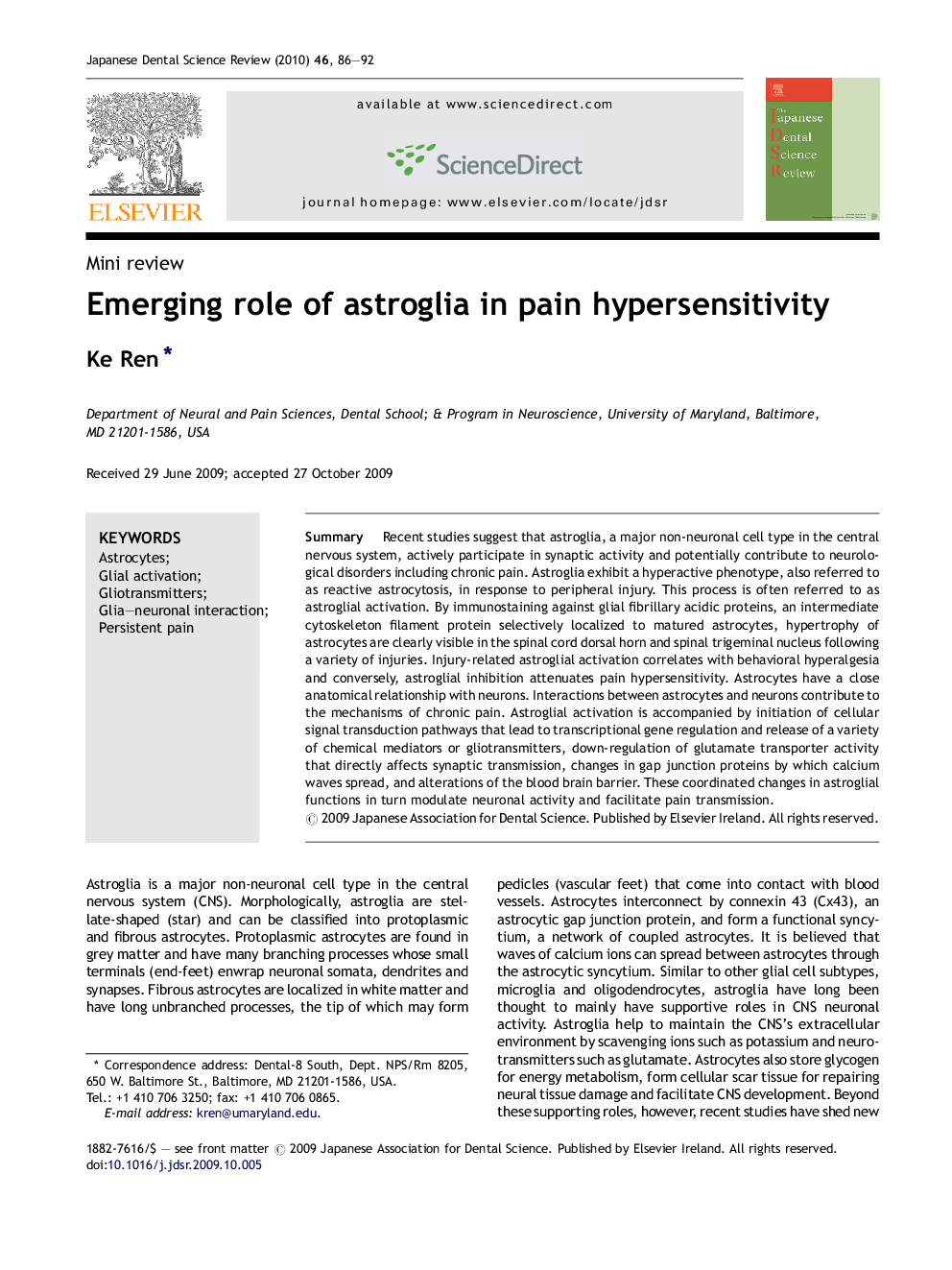| Article ID | Journal | Published Year | Pages | File Type |
|---|---|---|---|---|
| 3136505 | Japanese Dental Science Review | 2010 | 7 Pages |
SummaryRecent studies suggest that astroglia, a major non-neuronal cell type in the central nervous system, actively participate in synaptic activity and potentially contribute to neurological disorders including chronic pain. Astroglia exhibit a hyperactive phenotype, also referred to as reactive astrocytosis, in response to peripheral injury. This process is often referred to as astroglial activation. By immunostaining against glial fibrillary acidic proteins, an intermediate cytoskeleton filament protein selectively localized to matured astrocytes, hypertrophy of astrocytes are clearly visible in the spinal cord dorsal horn and spinal trigeminal nucleus following a variety of injuries. Injury-related astroglial activation correlates with behavioral hyperalgesia and conversely, astroglial inhibition attenuates pain hypersensitivity. Astrocytes have a close anatomical relationship with neurons. Interactions between astrocytes and neurons contribute to the mechanisms of chronic pain. Astroglial activation is accompanied by initiation of cellular signal transduction pathways that lead to transcriptional gene regulation and release of a variety of chemical mediators or gliotransmitters, down-regulation of glutamate transporter activity that directly affects synaptic transmission, changes in gap junction proteins by which calcium waves spread, and alterations of the blood brain barrier. These coordinated changes in astroglial functions in turn modulate neuronal activity and facilitate pain transmission.
